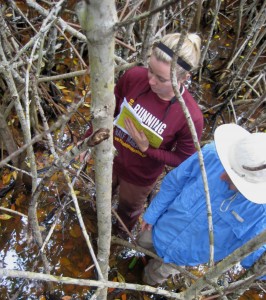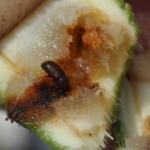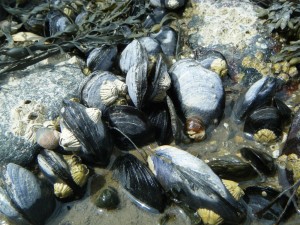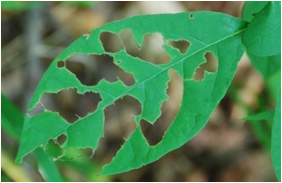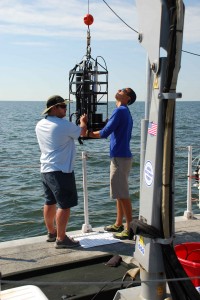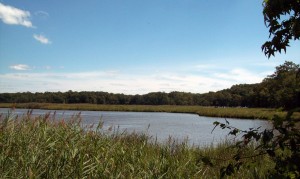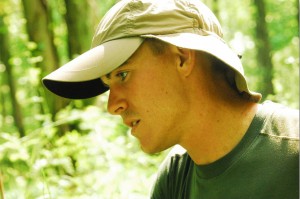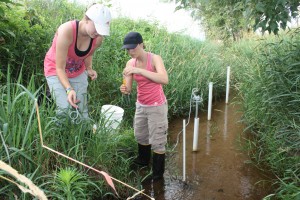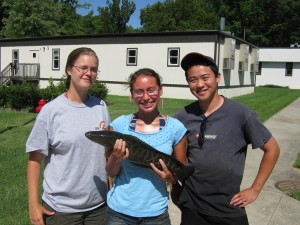Republished with permission from the Blue Crab Blog. Check out the Blue Crab Blog for the latest news regarding Maryland’s favorite crustacean.
By Katie Sinclair, Guest Blogger and Intern at the Smithsonian Environmental Research Center
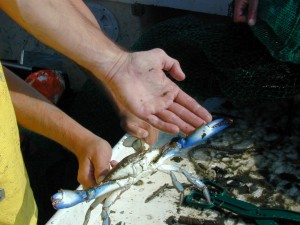
The blue crab may be the most well-known denizen of the Chesapeake Bay, with the blue crab fishery one of the most productive in the region. From the late 1990s to mid-2000s, the blue crab population was in decline, with a near record low population of blue crabs recorded in 2008. The cause of this decline is not fully known, but is most likely a combination of overfishing, habitat loss, poor recruitment, and poor water quality.
Since new regulations on crab harvesting, particularly those restricting the harvest of mature females, were put in place in 2008, the population of blue crabs has increased significantly. However, a low number of juveniles were caught in the winter dredge this year, leading to a gloomy forecast for the number of harvestable blue crabs for the 2013 season.
During my summer internship at the Smithsonian Environmental Research Center (SERC), I want to investigate if this forecast is coming true. The winter dredge survey, an extensive bottom trawl survey that catches blue crabs overwintering at the bottom of the bay, is impressive for its scale and precision. The survey takes into account 3 different regions of the bay, and 1500 sites are surveyed. The data are used to calculate crab density and from that project overall crab abundance. The 2013 winter dredge survey found markedly lower numbers of juvenile crabs (crabs smaller than 2.4 in) than in previous years. One of the key questions regarding the survey, however, is just how closely the observed winter population of juveniles correlates with the actual number of blue crabs that survive to the summer.
One of the main issues with using the juvenile index from the winter dredge survey to predict future abundance of adult blue crabs is that it does not take into account survivorship of juvenile crabs, which can vary widely from year to year. Blue crabs are competitive and cannibalistic, and a large proportion of juvenile blue crab mortality can be attributed to predation by blue crabs themselves. Using the juvenile index to predict future adult abundances does not take into consideration interactions between adult and juvenile blue crabs—a low number of juveniles could in fact be the result of increased predation pressure from the adult population. Longer term research conducted at SERC has indeed shown that mortality of juveniles is related to the density of adult crabs.
Over this summer, research will be conducted to determine how adult and juvenile abundances from the winter dredge survey correlate with the actual numbers of blue crabs observed in the summer. Crabs will be collected by net tows and their abundance and size will be recorded. Similar research conducted last summer showed that the high numbers of juvenile blue crabs found by the 2012 winter dredge survey had vanished by the summer.
Hopefully for crab-lovers, the future low abundance of crabs projected by the low juvenile index of the winter dredge survey will be found to be too low. Recruitment rates for blue crab are known to fluctuate wildly, and survivorship of larvae to juveniles depends on multiple factors: salinity, temperature, dissolved oxygen, and predation. The winter dredge report did show an increase in mature females, which suggests that management strategies designed to protect fecund females are in fact working.
Research done at SERC comparing crab abundance and mortality brings to light interesting questions regarding the overall dynamics of the blue crab populations. The comparison of observed crab abundance in the summer to the juvenile index from the winter dredge report will help us determine how accurate the juvenile crab index is at predicting future crab abundances. Studying the population dynamics of blue crabs can help us understand and preserve this valuable natural resource.


